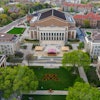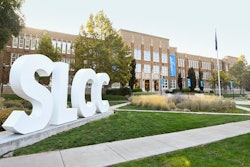A shaman’s owl mask. A brass Loon Spirit hat. A faded hide robe that memorializes ancestors of the Hoonah T’akdeintaan clan wiped out by a tidal wave in Lituya Bay, Alaska.
These items and dozens more belong to clan members, not the Pennsylvania museum where they’ve been stored for decades, a federal committee ruled recently.
Marlene Johnson, a T’akdeintaan elder, has been trying to return the objects to Alaska ever since watching a slideshow of the collection in the mid-1990s.
“As long as there’s one of us around, it belongs to us,” she said.
The decision comes on the 20th anniversary of the Native American Graves Protection and Repatriation Act, a federal law under which American Indians can claim human remains and cultural objects held by museums and federally funded agencies.
For the first time, a dispute over Alaska Native sacred or cultural objects this month reached the NAGPRA repatriation review committee, says committee chair Rosita Worl. Normally museums and tribes can reach some kind of agreement.
This time, Hoonah’s village Native corporation — a federally recognized tribe — are at an impasse with the University of Pennsylvania Museum of Archaeology and Anthropology.
At issue: 40 or more objects such as a shaman’s box drum and headdress, a ceremonial rattle and a mask. The Lituya Bay robe, for example, represents the spirits of clan ancestors and is needed by religious leaders for use in funeral and memorial potlatches, according to the Huna Heritage Foundation.
Most of the items were purchased in 1924 in Hoonah by Louis Shotridge, a Tlingit man from Klukwan who worked for the Philadelphia university. The school’s museum added the items to its collection.
A Tlingit anthropologist and president of the Sealaska Heritage Institute, Worl calls Shotridge “a better anthropologist than he was a Tlingit.”
“He did a great job for the museum in terms of acquiring or taking collections. And I guess he believed he was doing the right thing by preserving it,” she says. “A good Tlingit wouldn’t do that. They would see the most important thing is it’s used in our ceremonies and see it as sacred objects. Which they are.”
Purchased for $500
The items sought by the Hoonah clan were mainly purchased from the clan’s Mt. Fairweather House, commonly known as “Snail House.” In Tlingit culture, “houses” are subdivisions within a clan.
Museum officials say Shotridge bought the items from Archie White, housemaster of the Snail House, for $500. Following the passage of NAGPRA, photos of the collection were shown to members of the T’akdeintaan clan about 15 years ago in Juneau.
“There were hats. There was a box drum. There were rattles. There was the cedar bark (neck rings) that the warriors used in ceremonies,” says Johnson, whose brother has been caretaker of the Snail House for 19 years in Hoonah.
“Let me tell you, it’s just breathtaking,” she says.
The Hoonah Indian Association and Huna Totem Corp. want the items back. They say it’s not clear who sold the objects and that the clan as a whole did not consent to the sale.
But the university has argued that Hoonah’s claim to the items misreads federal law and threatens to upset the balance between tribes and the museums that seek to protect, restore and share the cultural objects.
“The selling of ceremonial regalia and clan objects has a long history in the Northwest coast and among the Tlingit,” museum officials wrote in a July letter to the repatriation committee.
The museum has offered to give back eight objects in the collection — such as the Lituya Bay robe and owl mask — and make Hoonah officials co-curators of the remaining items. The Hoonah groups have instead pushed for ownership of the entire collection.
On Nov. 19 in Washington, D.C., the NAGPRA repatriation review committee voted unanimously: The Hoonah collection included sacred items, they said, and the museum “does not have right of possession” to the objects.
The advisory decision, which must be approved by the secretary of the U.S. Department of the Interior, paves the way for the objects to be returned to Alaska. Or maybe for a legal battle.
“The next step is up to the University of Pennsylvania museum to decide whether they’re going to repatriate them or whether we’re going to have to end up taking them to federal court,” Johnson says.
University spokeswoman Lori Doyle says the museum is disappointed with the committee’s decision but university officials “hope to continue to work with the claimants to find a resolution.”





















